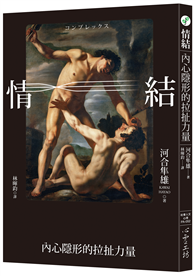At the turn of the twentieth century, American popular culture was booming with opportunities to see Jesus Christ. From the modernized eyewitness gospel of Ben-Hur to the widely circulated passion play films of Edison, Lumi re, and Path ; from D. W. Griffith's conjuration of a spectral white savior in Birth of a Nation to W. E. B. Du Bois's "Black Christ" story cycle, Jesus was constantly and inventively visualized across media, and especially in the new medium of film. Why, in an era traditionally defined by the triumph of secular ideologies and institutions, were so many artists rushing to film Christ's miracles and use his story and image to contextualize their experiences of modernity?
In The Disappearing Christ, Phillip Maciak examines filmic depictions of Jesus to argue that cinema developed as a model technology of secularism, training viewers for belief in a secular age. Negotiating between the magic trick and the documentary image, the conflicting impulses of faith and skepticism, the emerging aesthetic of film in this period visualized the fraught process of secularization. Cinematic depictions of an appearing and disappearing Christ became a powerful vehicle for Americans to navigate a rapidly modernizing society. Studying these films alongside a multimedia, interdisciplinary archive of novels, photographs, illustrations, and works of theology, travel writing, and historiography, The Disappearing Christ offers a new narrative of American cultural history at the intersection of cinema studies and religious studies.| FindBook |
有 1 項符合
The Disappearing Christ: Secularism in the Silent Era的圖書 |
 |
The Disappearing Christ: Secularism in the Silent Era 作者:Maciak 出版社:Columbia University Press 出版日期:2019-08-27 語言:英文 規格:精裝 / 264頁 / 23.6 x 16 x 2 cm / 普通級 |
| 圖書館借閱 |
| 國家圖書館 | 全國圖書書目資訊網 | 國立公共資訊圖書館 | 電子書服務平台 | MetaCat 跨館整合查詢 |
| 臺北市立圖書館 | 新北市立圖書館 | 基隆市公共圖書館 | 桃園市立圖書館 | 新竹縣公共圖書館 |
| 苗栗縣立圖書館 | 臺中市立圖書館 | 彰化縣公共圖書館 | 南投縣文化局 | 雲林縣公共圖書館 |
| 嘉義縣圖書館 | 臺南市立圖書館 | 高雄市立圖書館 | 屏東縣公共圖書館 | 宜蘭縣公共圖書館 |
| 花蓮縣文化局 | 臺東縣文化處 |
|
|
圖書介紹 - 資料來源:博客來 評分:
圖書名稱:The Disappearing Christ: Secularism in the Silent Era
|








